Jefferson county was created by an act of the legislature December 13, 1819. The territory from which this county was formed was taken from Blount County. Since 1890, however, a portion of Jefferson has been annexed to Walker, and a part of Shelby to Jefferson.The county has a total area of 719,360 acres, or 1,124 square miles.
The name was given to this county in honor of Thomas Jefferson, third president of the United States.
It is situated in the north central portion of the state, on the “southern extension of the Appalachian system and in the center of the rich iron, coal, and limestone belt of the south,” it is bounded on the north by Walker and Blount, on the east by St. Clair and Shelby, on the south by Tuscaloosa, Shelby and Bibb, and on the west by Tuscaloosa and Walker Counties.
RIBBON OF LOVE: 2nd edition – A Novel Of Colonial America: Book one in the Tapestry of Love Series
The county is divided almost in half by a long narrow valley ranging from four to twelve miles in width, the upper part being known as Jones’ Valley, the lower half as Roup’s Valley. Northwest of this valley, are the “coal measures of the great Warrior field,” (q. v.), and on the southeast is the Cahaba field (q. v.).The principal drainage is into the Little Cahaba, Warrior, and Locust Fork Rivers.
The earliest settlers of Jefferson County say that the Indians did not use this area to live in, but that it was used by the Creeks, Choctaws and Cherokees as a hunting and ceremonial ground.
Scattered throughout the county are some evidences of aboriginal occupancy, though located as the territory is away from the more thickly peopled centers, these remains are not extensive. A group of mounds is to be found in T. 17 S. R. 1. W., four miles north of Birmingham. A large quadrangular mound a few miles from Elyton. Mounds and “furnaces” on Village Creek, were noted many years ago, as well as those near old Jonesborough (southwest from Bessemer), on Sec. 8, T. 19 S., R. 4 W., known as the Talley mounds. Indian graves have been found near Bullard’s Shoals on Valley Creek and on Red Mountain near Red Gap, in Sec. 21, T. 19 S., R. 4 W. opposite the Thomas McAdory place.
The earliest pioneers came to Jefferson County about 1815, and settled in Jones’ valley, the name being given in honor of one of the first settlers, John Jones. The first white child born in the county was Moses Field. Settlements were soon made at Village Springs, Turkey Creek, and Elyton.
The first regular term of the circuit court was held at a place called Carrollsville. In 1821 the seat of justice was removed to Elyton.
Elyton Land Company
A company was raised in Jefferson County for the Seminole War of 1836, with James McAdory as Captain. This organization went to Florida and all but a few of its men returned, those not returning having died of disease.
Between the years of 1836 to 1861 the county increased in population and prosperity.
About 1823 a company was formed to make iron. The company secured the cooperation of Mr. Hillman of New Jersey, and “on a bold little stream which runs across Roupe Valley and empties its water in Shades Creek, near its mouth, he erected his little furnace, and with a large hammer propelled by water, hammered out a sufficient quantity of the best kind of tough metal to supply the county for some distance around.”
Jefferson County furnished its full quota of men to the Confederate Army.
The county site was changed from Elyton to Birmingham in 1871, the court house was burned in 1870 at the former place.
Delegates to Constitutional Conventions.—
- 1861—William S. Earnest.
- 1865—William S. Mudd.
- 1867—W. A. Walker.
- 1875—William S. Mudd; Alberto Martin.
- 1901—A. C. Howze; R. M. Cunningham; Charles W. Ferguson; Charles P. Beddow; James Weatherly; John W. O’Neal; H. C. Sellieimer; T. J. Cornwell; Robert J. Lowe; Frank S. White.
SENATORS=
- 1822-3-John Wood
- 1825-6-John Brown
- 1828-9 – John Wood
- 1830-1- John M. Dupuy
- 1833-4 John Brown
- 1836-7 Harrison W. Goyne
- 1838-9 Walker K. Baylor
- 1839-40- C. C. P. Farrar
- 1841-2- Walker K. Baylor
- 1843-1 Moses Kelly
- 1844-5 John Ashe
- 1847-8 Moses Kelly
- 1851-2 Moses Kelly
- 1853-4 Moses Kelly
- 1855-6 H. W. Nelson
- 1857-8 John T. Storrs
- 1859-60 H. W. Nelson
- 1861-2 John P. Morgan
- 1864-5 Mitchell T. Porter
- 1865-6 O. T. Deason
- 1868 John Oliver
- 1871-2 John Oliver
- 1872-3 G. W. Hewitt
- 1873 J. W. Inzer
- 1874-5 J. W. Inzer
- 1875-6 J. W. Inzer
- 1876-7 R. W. Cobb
- 1878-9 W. C. Rosamond
- 1880-1 J. B. Luckie
- 1882-3 J. b. Luckie
- 1884-5 R. H. Sterrett
- 1886-7- R. H. Sterrett
- 1888-9 J. T. Milner
- 1890-1 John T. Milner
- 1892-3 J. T. Milner
- 1894-5 John T. Milner
- 1896-7 R. M. Cummingham
- 1898-9 R. M. Cunningham
- 1899 (Spec) R. M. Cunningham
- 1900-01- Hugh Morrow
- 1907- N. L. Miller
- 1907 (spec) – N. L. Miller
- 1909 (spec) – N. L. Miller
- 1911 – Hugh Morrow
- 1915 – T. J. Judge
- 1919- C. R. West
Representatives
- 1822-3 – Isaac Brown; Thomas W. Farrar
- 1823-4 – John Brown; Isham Harrison
- 1824-5 – Benjamin Worthington; Thomas W. Farrar
- 1825-6 John Brown; Walker K. Baylor; John M. Dupuy
- 1826-7 – John Brown; John Martin; John M. Dupuy
- 1827-8 – John Brwon; John F. Forrest; William K. Paulding
- 1828-9- John Brown; John M. Dupuy
- 1829-30- John Brown; John F. Forrest
- 1830-1 – John Brown; Peyton King
- 1831-2 – Emory Lloyd; Harrison W. Goyne
- 1832 (called) – Hugh M. Carithers; Samuel S. Earle
- 1832-3 – Hugh M. Carithers; S. S. Earle
- 1833-4- Hugh M. Carithers; John Brown (“Red”)
- 1834-5 – W. A. Scott; John Cantley
- 1835-6 – L. G. McMillion; John Cantley
- 1836-7- L. G. McMillion; Moses Kelly
- 1837-8 – Octavius Spencer; Benjamin Tarrant
- 1838-9- L. G. McMillion; S. S. Earle
- 1839-40- L. G. McMillion; S. S. Earle
- 1840-1 – L. G. McMillion; Jeremiah Randolph
- 1841 (called) – L. G. McMillion; Jeremiah Randolph
- 1841-2 – L. G. McMillion; Jeremiah Randolph
- 1842-3 – L. G. McMillion; William S. Mudd
- 1844-5- Octavius Spencer; Williams S. Mudd
- 1845-6 – Christopher Deavers; Jeremiah Randolph
- 1847-8 – L. G. McMillion; W. S. Mudd
- 1849-50-John Camp; Hugh Coupland
- 1851-2- William S. Earnest; S. A. Tarrant
- 1853-4 – John Camp
- 1855-6- John Camp
- 1857-8- O. S. Smith
- 1859-60 – Alburto Martin
- 1861 -(1st called) – Alburto Martin
- 1861 (2nd called) – Alburto Martin
- 1861-2 – Alburto Martin
- 1862(called) – Alburto Martin
- 1862-3 – Alburton Martin
- 1863 (called) – John C. Morrow
- 1863-4- John C. Morrow
- 1864 (called) – John C. Morrow
- 1864-5- John C. Morrow
- 1865-6 – John Oliver
- 1866-7 – John Oliver
- 1868 – Thomas Sanford
- 1869-70 – G. W. Hewitt
- 1870-71 – Goldsmith W. Hewitt
- 1871-2 – G. W. Hewitt
- 1872-3 – R. J. Greene
- 1873-4 – J. Greene
- 1874-5 R. S. Greene
- 1875-6 – R. S. Greene
- 1876-7 – John J. Jolly
- 1878-9 – J. J. Akers’
- 1880-1 -J. Kent; H. J. Sharit
- 1882-3 – J. E. Hawkins; C. McAdory
- 1884-5 – Chambers McAdory; S. E. Greene
- 1886-7 – G. W. Hewitt; I. W. McAdory
- 1888-9 – Robert J. Lowe; M. A. Porter
- 1890-1 – H. H. Brown; M. V. Henry
- 1892- 3 – John McQueen; Fred S. Ferguson; Frank P. O’Brien; John T. Shugart; T. Y. Huffman; George W. Ward
- 1894-5-W. F. Fulton; Lawrence Y. Lipscomb; John McQueen; Frank P. O’Brien; Joseph H. Montgomery; Sam Will John
- 1896-7- J. J. Altman; D. A. Greene; D. J. Ovens; L. Y. Lipscomb; John Harkins; I. A. Brown
- 1898-9 – G. B. Burkhalter; John W. McQueen; S. C. Davidson; J. B. Gibson; D. W. Houston; Van Huey
- 1899 (spec) – G. B. Burkhalter; John W. McQueen; S. C. Davidson; J. B. Gibson; D. W. Houston; Van Huey
- 1900-01 – Frank P. O’Brien; A. R. Benners; J. H. Leath; H. R. Dill; E. P. Lacey; A. J. Reilly
- 1903- Augustus Benners; Felix Edward Backburn; William Columbus Cunningham; Joel Campbell DuBose; Littleberry James Haley, Jr.; Cunningham Wilson Hickman; Alexander Troy London
- 1907- John T. Glover; L. J. Haley; Sam Will John; Jere C. King; W. E. Urquhart; R. F. Lovelady; M. C. Ragsdale
- 1907 (spec.) John T. Glover; L. J. Haley; Sam Will John; Jere C. King; W. E. Urquhart; R. F. Lovelady; M. C. Ragsdale
- 1909 – (spec.) John T. Glover; L. J. Haley; Sam Will John; Jere C. King; W. E. Urquhart; R. F. Lovelady; M. C. Ragsdale.
- 1911—W. H. Barnard; J. A. Eastis; Thos. J. Judge; T. C. McDonald; T. H. Moulton; Walker Percy; C. A. O’Neill.
- 1915—Dr. E. P. Hogan; Isadore Shapiro; F. I. Tarrant; J. B. Weakly; D. R. Copeland; W. S. Welch; N. W. Scott.
- 1919—J.-C. Arnold; A. Benners; W. E. Dickson; S. W. Hawkins; W. L. Harrison; Geo. Ross; J. D. Truss.
SOURCE
- History of Alabama and Dictionary of Alabama Biography, Volume 2 By Thomas McAdory Owen, Marie Bankhead Owen
Check out all these books by Donna R. Causey
WHERE DO I START? Hints and Tips for Beginning Genealogists with On-line resources
Did you know that all E-books can be downloaded immediately from Amazon.com? Click below to see how.


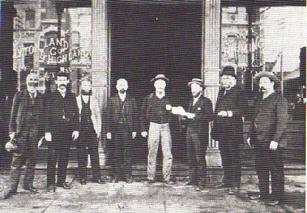
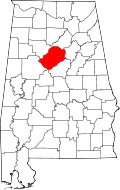
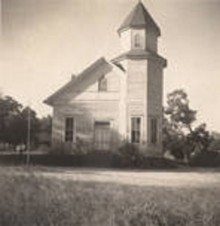
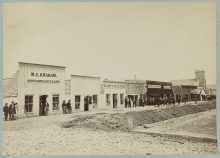
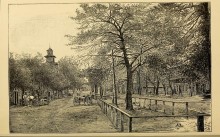
Does anyone know if Moses Fields is related to Goulder Fields?
I think Goulder is his Uncle. I am Moses 3x great nephew and Goulder is a 4x Uncle. The Moses who was first born was Greatx3 grandfather Samuel’s son who was born in 1816. Samuel born in 1790 older brother was Goulder Fields of Marshall County.
Does anyone know anymore about the history of Carrollsville? How did it get its name? I’m assuming it was from a family named Carroll. If so, does anyone know anything about this family?
Why has the Jefferson Historical Society named the McAdory, Owen and Sadler families the pioneering families, and you do not include them in this article?
The Jeffderson Historical Society has named the McAdory, Owen and Sadler families the early pioneers, yet you do not include them.
The information in this article is from History of Alabama and Dictionary of Alabama Biography, Volume 2 By Thomas McAdory Owen, Marie Bankhead Owen – i do not know why they were not included because the authors were from these familes.
I have a great deal of information on Dr. Samuel S. Earle, and his family. He was one of the early physicians in Elyton, Jefferson Co & state representative several terms as early as 1832, and his children/
grand children were equally interesting – one married William S. Mudd (Arlington), many Civil War – died, survived Yankee prison camps; Mortimer Jordan, Thomas Farrar, etc connections… on down to the
Montgomery’s and the Mungers later…
Thank you for all the information about Alabama. I was raised in Birmingham Alabama in the 30’s and until I was married and moved away but my heart is still there in my old age.
This short video states that the demolition of Birmingham Terminal took place in 1929 !?! It was 1969 !
Love reading about things that happened in Alabama in the early days of our state.